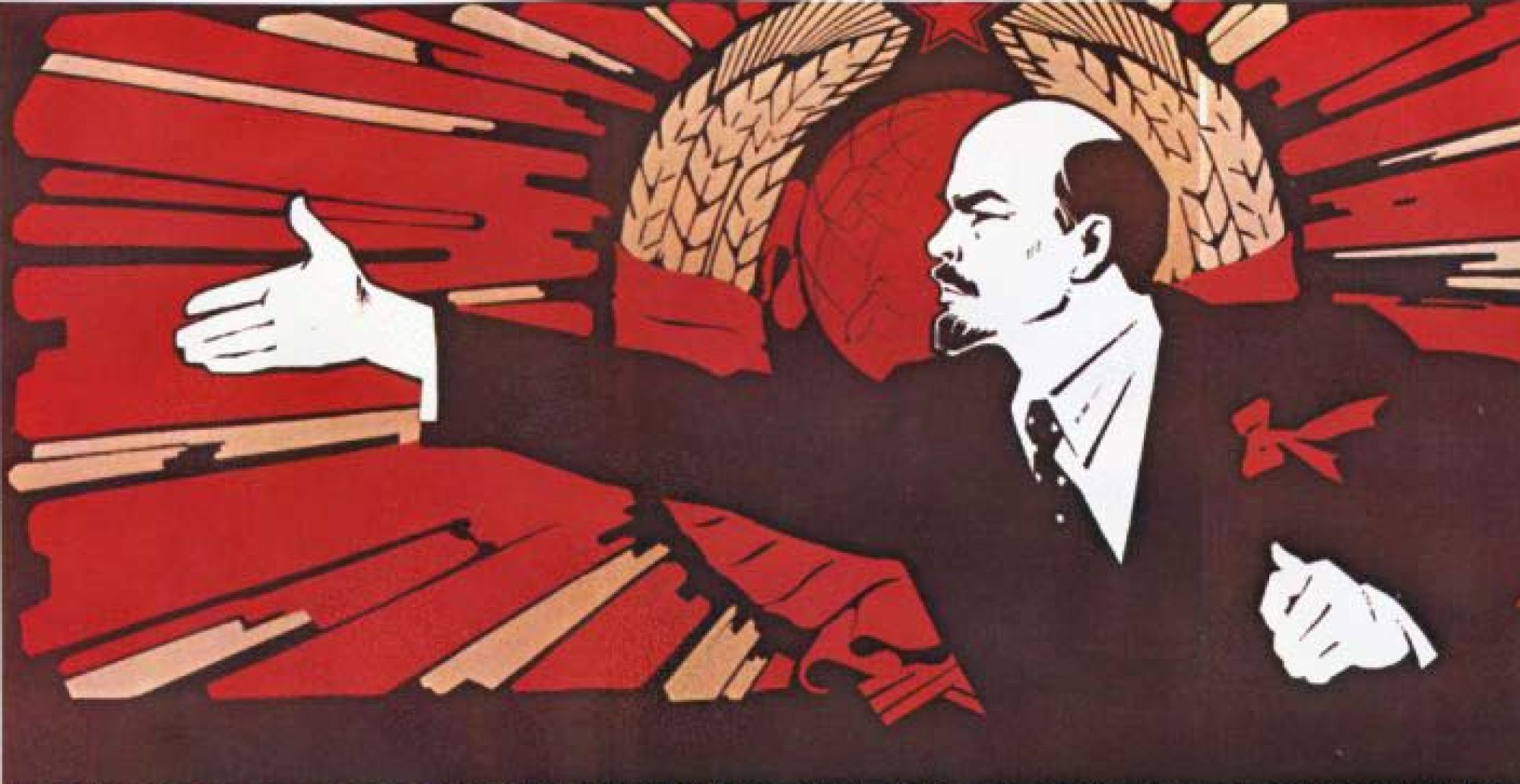In the Cult of Personality slide show, we can clearly see how Stalin sought to prop himself up as the only viable leader for the Soviet Union…a strong individual, chosen by Lenin (although not really) to continue the great communist experiment in the USSR. In slide 5, Stalin shares the image with Lenin while he, Lenin, seems to look on approvingly at what Stalin is presenting him. The sense of frame works to solidify Stalin’s place as Lenin’s successor and paint a clear line from Lenin to himself, even though in reality, the line was somewhat obscured due to the various ousts that occurred in order for Stalin to attain his position. By the mid 1930s to the early 1950s, Lenin has an increasingly small appearance in these political paintings and propaganda images. In “The Politiburo,” (slide 6) Lenin is merely a bust in the back of the party meeting, as is the case with “Stalin at the 16 Party Congress” (slide 7). In “Beloved Stalin, Happiness of the People!,” all we see of Lenin is a small portrait somebody in the crowd is raising above their head. By 1950 in “Glory to the Great Stalin!,” (slide 8) Lenin is nowhere to be found. In other media he without a doubt makes some appearances, but the seemingly steady decrease in his prominence could easily be viewed as Stalin truly taking control of the party and reshaping it, and by extension the nation, in his own image.
In “On the Inadequacies of Party Work,” Stalin frames outsiders as the enemy. The Trotskyists, the Germans, the Japanese, and the capitalists who would love to see the Soviet Union fail. This is an important shift. It builds upon Lenin’s criticisms of an economic enemy who seeks the USSR’s destruction, but it also shifts the focus to the two main Fascist/Imperialist nations who at this point in time are seeking to expand their influence and regain territory. In 1931 Japan had invaded Manchuria, and in 1936 Germany re-militarized the Rhineland. Since these two increasingly powerful countries were essentially the growing bookends of the USSR, it is notable that Stalin sees them as a growing danger by 1937 (perhaps not militarily, but ideologically, geographically, and strategically). Both governments, as Fascist in nature, exhibited a sense of hyper-capitalism in the relations between government and industry, and with the fascist vs. communist Spanish Civil War was playing out, the fear of such countries weakening the USSR became not only a danger to Soviet communist ideology, but in extension, to Stalin’s power itself. The NKVD’s ideological crackdowns in 1937, explained in “Into the Whirlwind” (page 6 of the .pdf document) could, in light of these events, be seen as a response to an ever growing threat of foreign capitalism/fascism and an effort to further purify the party’s ranks. The extent to which the government went to could be viewed as paranoid, but it is reasonable to say that while the threat to the USSR was present, it was possibly exaggerated to increase the economic output of the country and encourage that foundation of a strong national identity.

I agree that the government exaggerated the amount of paranoia, if I’m understanding this correctly. With Stalin’s speech, he puts off more of a sense of paranoia than, I believe, he actually has. With regards to the people “he” is going after, the spies and saboteurs, he is looking for significant people than can oppose him.
In regards to Germany and Japan, Stalin may see them as possible threats down the line, but as I said before, the main enemies are the spies that oppose him. As far as I am concerned, Germany is primarily focused on make themselves the “best Aryans” in the German state, and the USSR should not worry too much about them for a few years. As for Japan, I do not know, but they don’t seem like much of a threat for Stalin at the moment.
As Lauren said, it doesn’t appear that Stalin is as afraid of other entities as much as he is afraid of his own people betraying him. It would make sense for Stalin to exaggerate the amount of paranoia and this concept of exaggeration to be prevalent. In a way this hyperbole would imply that stalin is more aware of what is going on than he actually is. Essentially using this media to give off the idea that he knows what people may be up to in hopes to deter them from going against him.